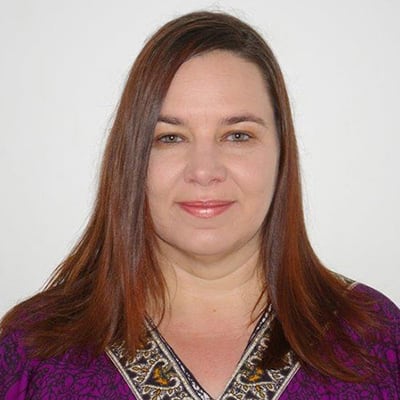Customer Logins
Obtain the data you need to make the most informed decisions by accessing our extensive portfolio of information, analytics, and expertise. Sign in to the product or service center of your choice.
Customer Logins
BLOG
May 04, 2018
South Africa on back foot as Namibia and Angola seek more investment
- South Africa has become one of the smallest recipients of foreign direct investment (FDI) inflows as a percentage of GDP in the Sub-Saharan African region in recent years. Furthermore, South Africa has moved towards more populist policies ahead of the 2019 national elections.
- Meanwhile important steps have been taken by Angola and Namibia to attract more foreign direct investment spending (FDI).
- On 19 April, the Angolan parliament unanimously passed a new law removing the minimum capital requirement of USD230,000 that foreign investors had to invest to set up a company. An obligation for foreign investors to co-invest with Angolan citizens was also scrapped.
- The Namibian government also decided to abolish the required 25% equity stake stipulated in the National Equitable Economic Empowerment Policy Framework (NEEEF).
South Africa’s business environment becomes more uncertain
Important steps have been taken by two southern African countries, Angola and Namibia, to attract more foreign direct investment (FDI). In stark contrast to these developments, South Africa has moved towards more populist policies ahead of the 2019 national elections. This ultimately increases uncertainty over future property rights (both individual and commercial ownership) in South Africa, while the country's highly contested mining legislation continues to stall mining-sector investment, still the largest foreign-exchange earner in the economy. The introduction of a minimum wage adds to the labor cost burden of industry, which is marred by disruptive work stoppages due to crippling strikes by large labor unions, affecting bus operators, for example. Infrastructural bottlenecks persist, which increasingly includes water security in the medium to longer term. Free tertiary education for lower income groups in South Africa, introduced in the 2018/2019 budget, will do little to address the education system's inefficiencies, mainly at primary and secondary school levels, meaning that those who potentially stand to benefit from the new dispensation may never achieve university acceptance levels. However, tertiary education opportunities at technical vocational education and training colleges remain favorable. The country's high unemployment rate will probably persist given that free education is not steered towards qualifications in the largest skills-deficit sectors of the economy.
Angola and Namibia pursue different investment policy directions
On 19 April, the Angolan parliament unanimously passed a new law removing the minimum capital requirement of USD230,000 that foreign investors had to invest to set up a company. An obligation for foreign investors to co-invest with Angolan citizens was also scrapped. Previously, the mandate had been for such ventures to have a minimum of 35% local ownership, which in many cases had given equity stakes to locals without any co-investment.
In April, the Angolan government also initiated discussions with the International Monetary Fund (IMF) on an economic reform program that could be supported by the Fund's policy co-ordination instrument. The latest decision by the Angolan government is intended to improve the country's profile as a preferred destination for FDI, as the authorities are showing a strong commitment to credible economic and financial reforms.
In the same month, the Namibian government decided to abolish the required 25% equity stake stipulated in the National Equitable Economic Empowerment Policy Framework (NEEEF). The decision was made after it became clear that the NEEEF initiative would not translate into broad-based economic empowerment, given that previously disadvantaged individuals in Namibia do not have sufficient resources to invest in empowerment transactions, nor are they able to obtain access to funding to participate in such transactions.
Outlook and implications
South Africa has become one of the smallest recipients of FDI inflows as a percentage of GDP in the Sub-Saharan African region in recent years. It is also one of the few countries which failed to show any progress in its World Bank Doing Business ranking in 2017 compared with 2015.

FDI inflows as % of GDP vs Change in World Bank Doing Business Ranking (2017-2015)
In April, South African President Cyril Ramaphosa appointed a team of business and finance experts to secure USD100 billion in local and foreign investment before the end of the year. A report by local newspaper Business Day stated, "Some of the money – as much as USD40bn – will come, he [Ramaphosa] says, from state-owned enterprises, an additional amount from Chinese investors, and the rest from the private sector, both domestic and foreign. 'I am truly excited about this,' he says of his 'investment-hunting' strategy." South Africa's low level of national savings (at 16.3% of GDP) necessitates substantial foreign investment inflows in order to reach these ambitious investment objectives.
However, South Africa is increasingly competing with other increasingly competitive countries within the Sub-Saharan African region. The realization that South Africa's attracting of foreign investment hinges on its advanced financial system, well developed infrastructure, relatively advanced manufacturing base, and skills pool could mean it increasingly becomes a challenge in the future. South Africa should take a hard look at its neighbors to ensure it retains or preferably increases its competitiveness in the future.
{"items" : [
{"name":"share","enabled":true,"desc":"<strong>Share</strong>","mobdesc":"Share","options":[ {"name":"facebook","url":"https://www.facebook.com/sharer.php?u=http%3a%2f%2fstage.www.spglobal.com%2fmarketintelligence%2fen%2fmi%2fresearch-analysis%2fsouth-africa-on-back-foot.html","enabled":true},{"name":"twitter","url":"https://twitter.com/intent/tweet?url=http%3a%2f%2fstage.www.spglobal.com%2fmarketintelligence%2fen%2fmi%2fresearch-analysis%2fsouth-africa-on-back-foot.html&text=South+Africa+on+back+foot+as+Namibia+and+Angola+seek+more+investment+%7c+S%26P+Global+","enabled":true},{"name":"linkedin","url":"https://www.linkedin.com/sharing/share-offsite/?url=http%3a%2f%2fstage.www.spglobal.com%2fmarketintelligence%2fen%2fmi%2fresearch-analysis%2fsouth-africa-on-back-foot.html","enabled":true},{"name":"email","url":"?subject=South Africa on back foot as Namibia and Angola seek more investment | S&P Global &body=http%3a%2f%2fstage.www.spglobal.com%2fmarketintelligence%2fen%2fmi%2fresearch-analysis%2fsouth-africa-on-back-foot.html","enabled":true},{"name":"whatsapp","url":"https://api.whatsapp.com/send?text=South+Africa+on+back+foot+as+Namibia+and+Angola+seek+more+investment+%7c+S%26P+Global+ http%3a%2f%2fstage.www.spglobal.com%2fmarketintelligence%2fen%2fmi%2fresearch-analysis%2fsouth-africa-on-back-foot.html","enabled":true}]}, {"name":"rtt","enabled":true,"mobdesc":"Top"}
]}





